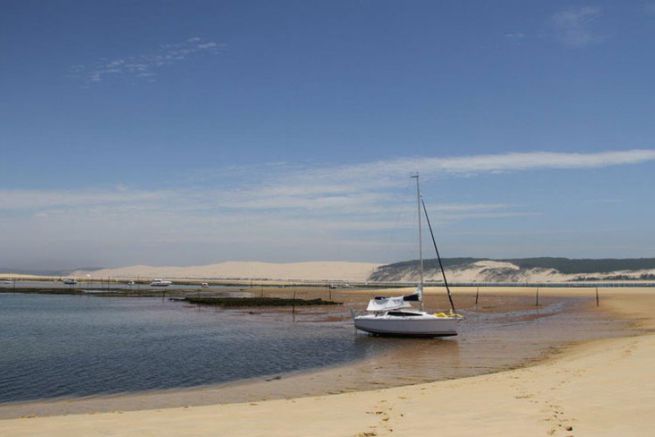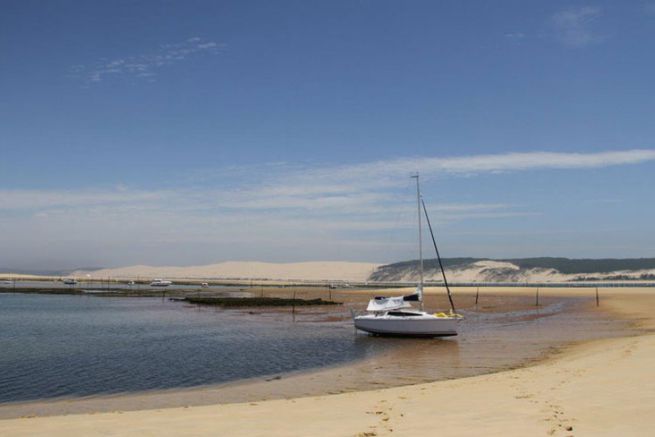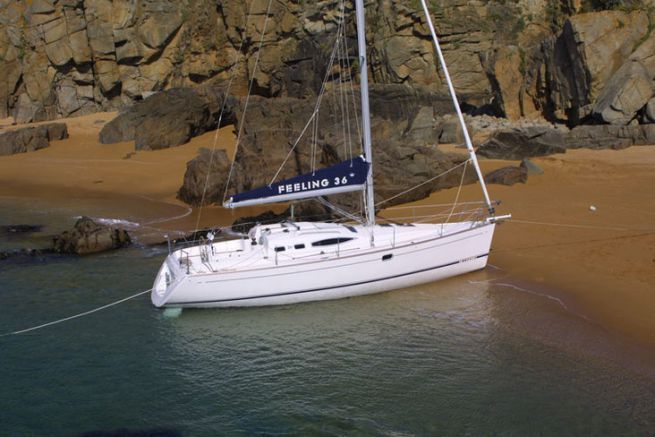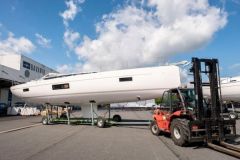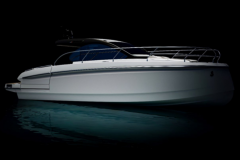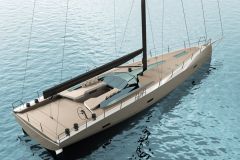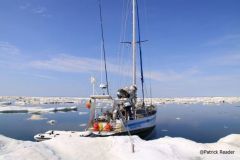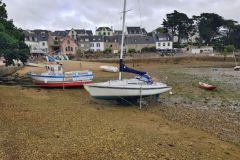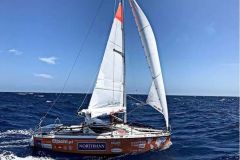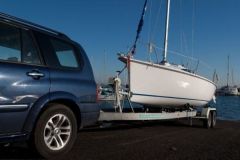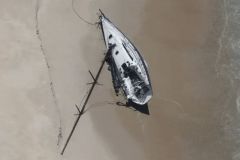If motorboats are easy enough to install (thinking of raising the motor for outboards or the base for Z-drive), it is not the same for sailboats. Depending on their keel, different reservations must be respected. Let's take for example the Maxus yard which offers each of its yachts with 4 different appendages and see how they adapt to this manoeuvre.
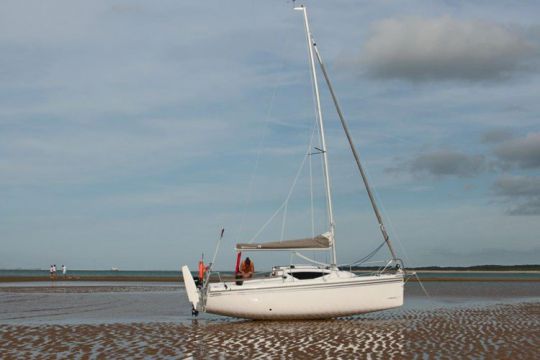
Dinghy version, grounding possible on welcoming ground
The dinghy version is the standard version for the yard. The daggerboard is fully retracted into the hull and the rudder is raised. The grounding then occurs by placing the boat directly on the hull. Once dry, the boat remains fairly low, easily accessible from the beach through the stern skirt.
Be careful, however, with the constitution of the soil. Do not land on a projecting rock that could damage the bottom of the hull. If in doubt, it is best to get into the water just before the boat lands to check that everything is clear underneath.
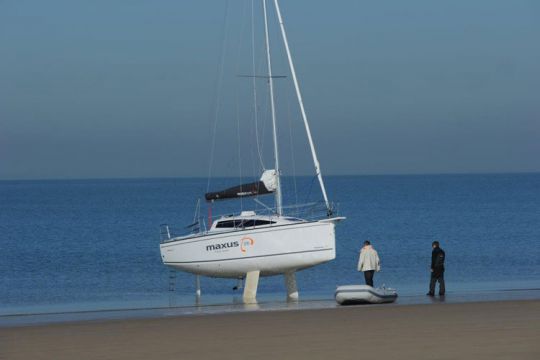
Double keel version, the ideal solution for grounding
In its twin keel version, the sailboat lands on its two keels and keeps well in balance. Certainly it is a little more perched, but the ladder always makes it possible to leave an access on board. Steel keels protect the hull from rocks. No problem to let the boat run aground alone without your presence. The twin keel solution is also interesting for wintering, as you can take the boat out in the dry without the need for a cradle.
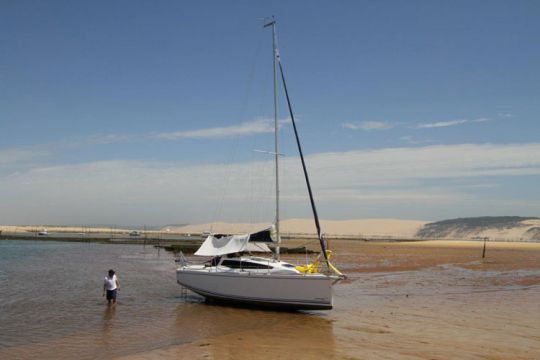
Liftable keel version
On the Maxus, the keel does not tip over to the stern, but goes into the hull like a sword daggerboard. By raising the hull, the lifting keel reduces the draught at the time of beaching. But it does not disappear completely into the hull. It always remains present, because the keel end salmon does not enter the hull. This is an advantage, because the sailboat then lands on this salmon. The hull remains protected from the rocks. However, to maintain balance, two (small) crutches are required.
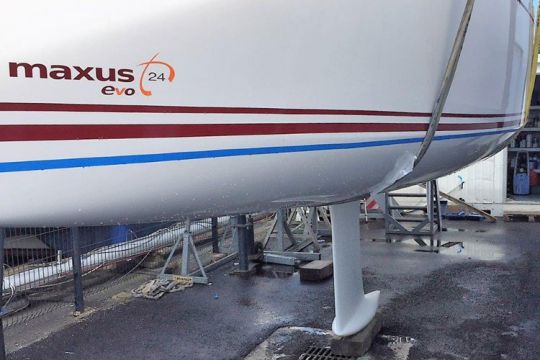
Keelboat version
Here's no salvation for the stranding! Indeed, the Maxus keelboats are not designed for such operations. To ground, a keelboat must have a keel veil wide enough so that it is stable from front to back to which 2 crutches are added. Maxus are not intended for this configuration. The lovers of stranding will fall back on the other versions of appendage fortunately available in the catalogue of this shipyard.
